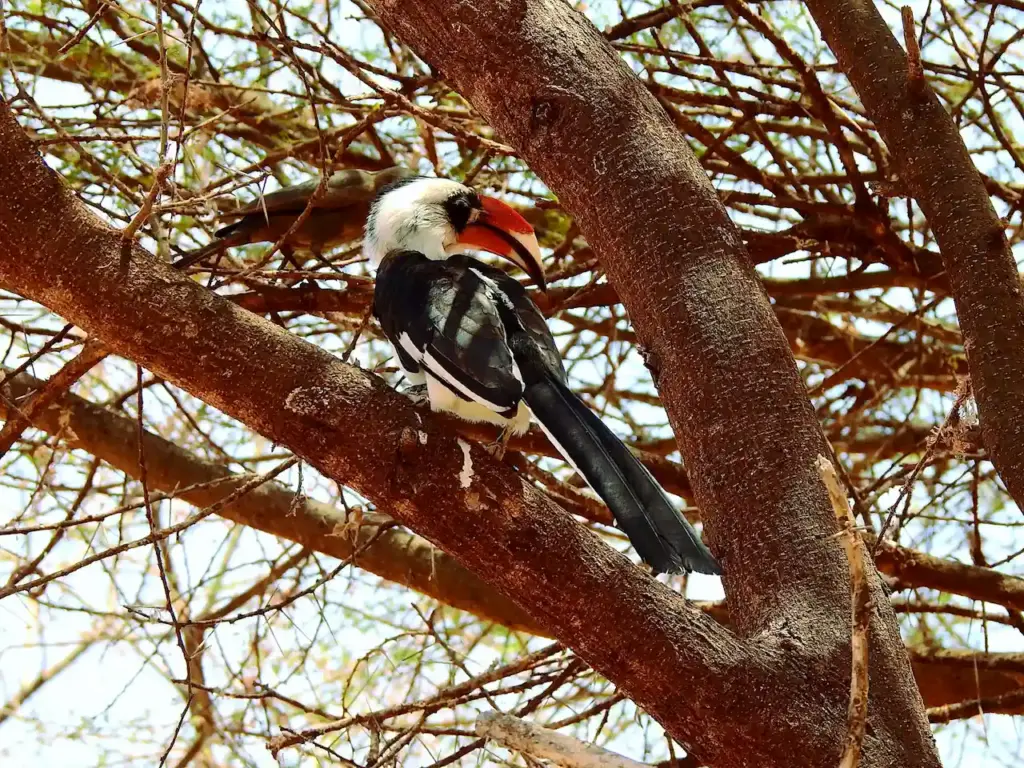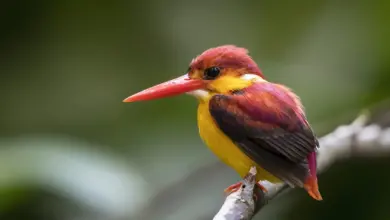The Von der Decken’s Hornbills (Tockus deckeni) is a hornbill.
Hornbills are a family of tropical near-passerine birds found in East Africa, especially to the east of the Rift Valley, from Ethiopia south to Tanzania. It is mainly found in thorn scrub and similar arid habitats.
It often includes Jackson’s Hornbill as a subspecies.
It was named after the German explorer Baron Karl Klaus von der Decken (1833-1865).

Description
This species is a small hornbill which has mainly whitish underparts and head and blackish upperparts. It has a long tail and a long curved bill which lacks a casque.
It is similar to the Red-billed Hornbill except for the bill colour, and the lack of spotting on the wing coverts in both male and female.
The species shows sexual dimorphism; the female has a black bill, whereas the male has a red bill with a cream tip and a black cutting edge.
Breeding
During incubation, the female lays two or three white eggs in a tree hole, which is blocked off with a cement made of mud, droppings and fruit pulp. There is only one narrow aperture, just big enough for the male to transfer food to the mother and the chicks.
When the chicks and the female are too big to fit in the nest, the mother breaks out and rebuilds the wall, then both parents feed the chicks.
Captive breeding can be acheveied by providing a small barrel or hollow tree with an entrance hole that is 5 inches tall and 3 inches wide. The birds will mud the hole shut once the hen is ready.
Food and feeding
Von der Decken’s Hornbill is omnivorous, taking insects, fruit and seeds.
It feeds mainly on the ground and will form flocks outside the breeding season.
In captivity the Von Der Decken Hornbill will eat the following readily; papaya, cantalope, blueberries, bananas, and apples. also live food such as crickets and mealworms should be offered daily.
Small rodents are readily taken but should only be offered 2 to 3 times per week.

References
- BirdLife International (2004). Tockus deckeni. 2006. IUCN Red List of Threatened Species. International Union for Conservation of Nature (IUCN) 2006. Retrieved on 11 May 2006. Database entry includes justification for why this species is of least concern
Copyright: Wikipedia. This article is licensed under the GNU Free Documentation License. It uses material from Wikipedia.org … Additional information and photos added by Avianweb.
Please Note: The articles or images on this page are the sole property of the authors or photographers. Please contact them directly with respect to any copyright or licensing questions. Thank you.



